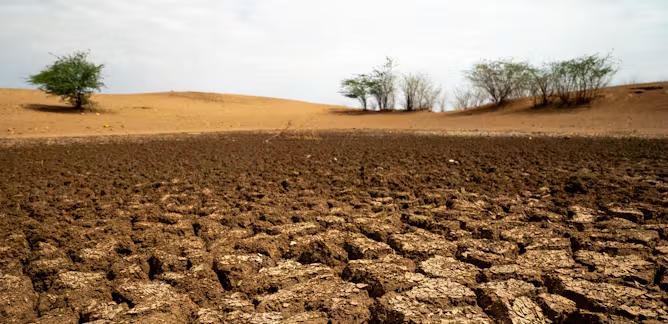A record fell last year on the climate front, with the year becoming the warmest one since data gathering began, as global surface temperatures went above 1.5 degrees Celsius over pre-industrial times for the first time in history, hitting 1.55 degrees Celsius in average global temperature.
A milestone occurred last year in the oceans, with the temperature for the upper 2000 meters reaching a record high, while the ocean heat content increase hit 16 zettajoules higher than the year before, an amount 140 times the quantity of electricity generated in 2023.
A record also fell in relations to the emissions of greenhouse gases, with 2023 figures reaching 420.0 parts per million (ppm) in global average of carbon dioxide concentration, 1934 parts per billion in methane (ppb) concentration and 336.9 ppb in nitrous oxide concentration, values of 141 percent, 265 percent, and 125 percent respectively above pre-industrial levels.
These are just examples of the current trend, where records get broken on the climate front, with the average global temperatures breaching dangerous levels, the annual average sea temperature recording great highs, record high atmospheric water vapour reached, and new numbers recorded for the globe’s daily average temperatures.
The Arctic region experienced a temperature anomaly of 2.71 degrees Celsius above average for 2024, the second warmest year on record, while 14 consecutive months (June 2023 through August 2024) of average temperatures reached new highs, with experts saying we’re halfway in 150 years to the three degrees Celsius above pre-industrial level of the Pliocene period, when sea levels stood dozens of feet higher than today.
The global ocean temperature has risen by 0.7 degrees Celsius since pre-industrial levels due to human activities, while the oceans have absorbed around 93 percent of the excess heat generated by human activities since the 1970s, just as the absorption of carbon dioxide by the ocean rises on a daily basis.
The emissions of greenhouse gases have been on the increase, with a 44 percent rise taking place between 1990 and 2015, the energy sector producing 75.7 percent of this by 2021, the agriculture sector accounting for 11.7 percent, and the industrial processes sector growing its share and hitting 6.5 percents of global emissions four years ago.
With very many records broken on the environment front in the years before, the frightening numbers for last year come as no surprise, only bringing thoughts about the deadly consequences of climate change and how they could manifest in the near future.
People 65 years of age and above showed an increase in heat-related mortality by around 85 percent between 2000-2004 and 2017-2021, while around 489,000 heat-related deaths happened each year between 2000-2019, 45 percent of the victims in Asia and 36 percent in Europe.
Marine ecosystems show an estimated 60 percent degradation from heat, while 70 to 90 percent of coral reefs could face destruction at warming of 1.5 degrees Celsius, with a two percent increase meaning a point-of-no-return, a nearly 100 percent loss.
Sea levels show a rise of 19 centimeters in the past century through rising emissions of greenhouse gases, but hurricanes and droughts could more than double by 2050 in nearly all regions of the earth with sustained emissions, while wind speeds in these storms could increase by as much as 20 percent, the frequency of Category four and five storms rising by more than 200 percent in some regions.
With the world continuing on its consumption orgy, and so many records on the environment front about to be broken, danger lurks at the corner, and it makes sense to find solutions to prevent billions of people from deadly consequences of climate change in the near future.
Reducing fossil fuel consumption is crucial to mitigate climate change, through individual actions, community and government initiatives, industrial and technical innovations, and global cooperation and education.
By Adetokunbo Abiola





